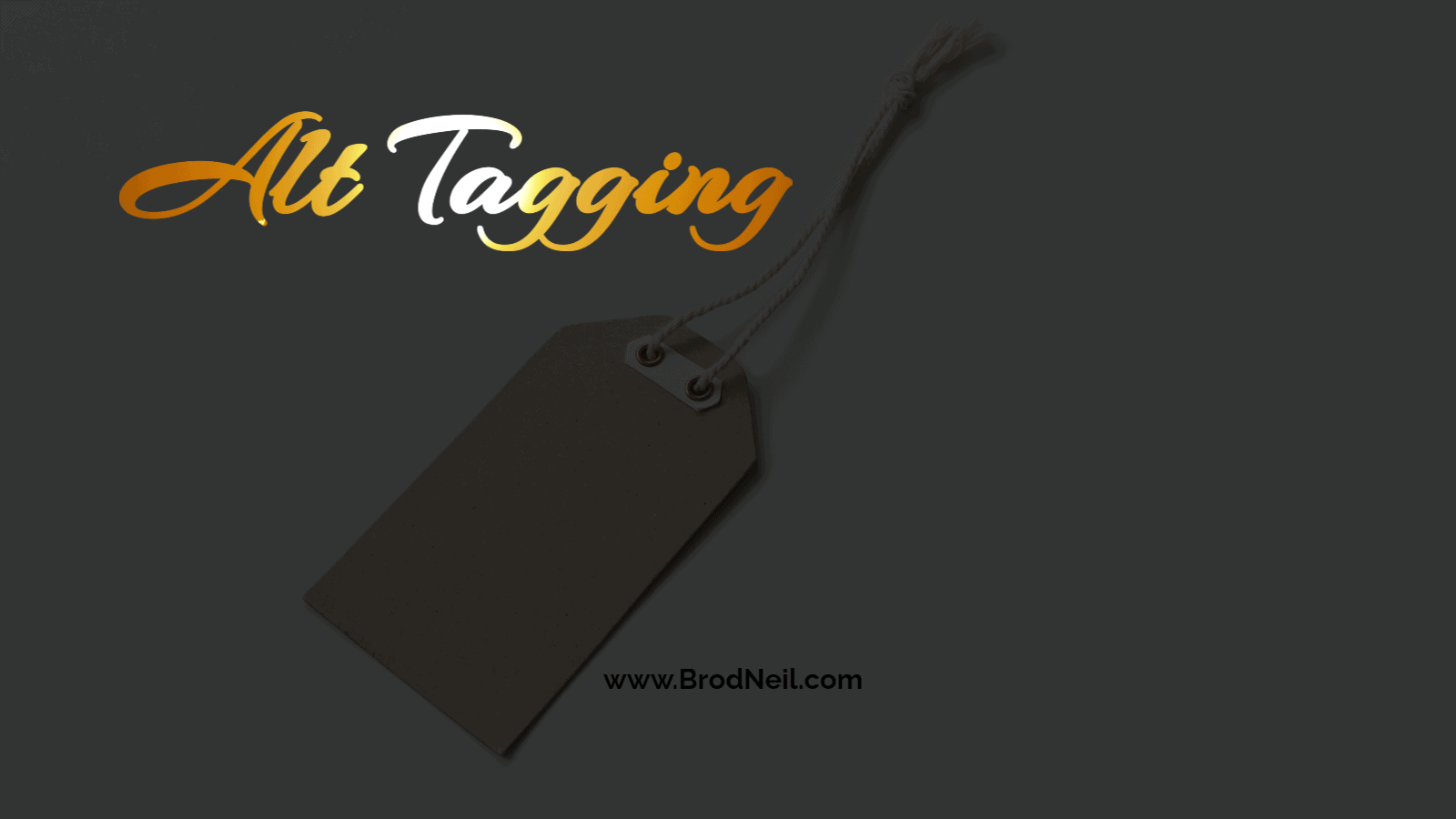Last Updated: 4 weeks ago by BrodNeil
ALT tags (alternative texts a.k.a. alt texts) are hidden descriptions for website images. These hidden powerhouses improve SEO by helping search engines understand your content and boost accessibility by providing narration for screen readers.
This comprehensive guide delves into the world of ALT tags, equipping you with the knowledge to optimize them for SEO success.
The Power of ALT Tags
ALT tags aren’t just fancy labels; they play a vital role in how search engines and users interact with your website. Here’s why they matter:
SEO Boost
Since images are a mystery to search engines, ALT tags act as their eyes. These descriptions not only help search engines understand your content but also boost your ranking for relevant keywords. In short, ALT tags are a win-win for SEO, making your website more discoverable.
Web Accessibility Champion
ALT tags are the key to unlocking a complete website experience for everyone. They act as the voice for visually impaired users relying on screen readers, ensuring screen readers can accurately describe images and provide equal access to information. This goes beyond accessibility; ALT tags are also a secret weapon for SEO. Since search engines can’t “see” images, ALT tags provide descriptions that help them understand your content and potentially boost your ranking for relevant keywords. In short, ALT tags are a win-win for both accessibility and SEO.
Enhancing the User Experience
Alt tagging also enhances the user experience of a website. When users hover over an image, the alt tag appears as a tooltip, providing a description of the image. This is especially helpful for users with slow internet connections or those using devices with small screens, as they may not be able to see the image clearly. Additionally, alt tags can provide contextual information about an image, such as its purpose, significance, or relationship to other content on the page, making it easier for users to understand the overall message of the page.
Crafting Effective ALT Text
Now that you understand the power of ALT tags, let’s explore how to craft them for optimal SEO benefits:
Accuracy First
The core function of an ALT tag is to describe the image accurately. Capture the main concept and include relevant details like objects, actions, and people.
Keyword Integration
While accuracy reigns supreme, strategically including relevant keywords can give your SEO a nudge. However, prioritize natural integration; keyword stuffing is a red flag for search engines.
Conciseness is Key
Aim for under 125 characters, ideally less. Remember, clarity trumps keyword density in a good ALT tag.
Best Practices for Writing ALT Text
Here are some additional tips to elevate your ALT text writing:
Be Descriptive
Alt tags should accurately and concisely describe the content of the image. Avoid using generic descriptions like “image” or “photo.” Start strong: Begin with a descriptive noun or verb to grab attention. Prioritize accessibility when creating alt tags; prioritize accessibility by ensuring they accurately describe the content of the image for users with disabilities.
Use keywords
Incorporate relevant keywords into your alt tags to help search engines understand the context and relevance of the image. Don’t stuff keywords: Avoid overusing keywords in your alt tags, as this can be considered spammy and may harm your SEO efforts.
Be mindful of length
Keep your alt tags to 125 characters or less to ensure they are fully visible in search results and on small devices.
Proper Grammar
Use sentence case for proper sentence structure.
Clarity for Complex Images
For images with multiple elements, separate them with commas for easy understanding.
Hyphens for Clarity
When using multi-word modifiers, hyphens ensure readability (e.g., “red-capped mushroom”).
Advanced ALT Text Strategies
Taking your ALT tag game a step further? Consider these strategies:
Informative Infographics
For infographics and charts, use ALT text to summarize key data points. You can even link to a detailed page for a deeper dive.
Descriptive Decorations
Don’t neglect decorative images! Use neutral descriptions like “Decorative border” to provide context without being intrusive.
Functional Buttons
For buttons, prioritize describing their function (e.g., “Submit form”).
Common ALT Tag Mistakes (and How to Avoid Them)
Even the most seasoned SEO professional can make mistakes. Here are some common pitfalls to avoid:
Missing in Action
Don’t leave any image without an ALT tag! Every visual element deserves a description.
Generic Descriptions
Avoid generic labels like “image1.jpg.” Be specific!
Keyword Cramming: Focus on natural integration, not keyword stuffing.
Overly Complicated
Keep it clear and concise for optimal accessibility.
Ignoring Decorations
Don’t forget decorative images; use neutral descriptive text.
Tools and Resources for Effective ALT Tags
Creating effective ALT tags doesn’t have to be a solitary endeavor. Here are some resources to help you:
Keyword Research Tools
Utilize free tools like Google Keyword Planner to identify relevant keywords for your ALT text.
SEO Audit Tools
Several SEO audit tools can help identify missing ALT tags, making them easy to tackle.
ALT Text Generators (Use with Caution)
While online ALT text generators exist, use them with caution. It’s always best to prioritize manually created, descriptive text.
Accessibility: A Core Consideration
Beyond SEO benefits, ALT tags play a crucial role in website accessibility. For visually impaired users relying on screen readers, ALT tags become the voice, describing the images and ensuring an inclusive user experience. Following WCAG (Web Content Accessibility Guidelines) will ensure your ALT tags are optimized for accessibility.
Conclusion: Reap the Rewards of Effective ALT Tags
Well-optimized ALT tags are a win-win for your website. They enhance SEO potential, improve user experience for all visitors, and boost website accessibility. Integrate effective ALT tags into your SEO strategy and witness the positive impact on your website’s overall success.
More about Alt Tagging
Google podcast talks about Alt Text for accessibility and SEO purposes
While it may be tricky to balance Alt text for accessibility and SEO purposes, one important practice is to never leave the field blank because something is better than nothing.
Source: https://www.searchenginejournal.com/google-on-alt-text-seo-accessibility/468044/
Tara Mae Dela Cruz is a passionate writer and storyteller hailing from the Philippines. With a love for words and a vivid imagination, she weaves compelling tales that transport readers into captivating worlds. Her writing style is characterized by its lyrical prose and deep emotional resonance, drawing inspiration from her own experiences as well as the diverse cultures she encounters. Tara's work often explores themes of identity, family dynamics, and the power of human connection. When she's not writing, you can find Tara exploring new hiking trails or curled up with a good book, always seeking to broaden her horizons and find inspiration in the world around her.


